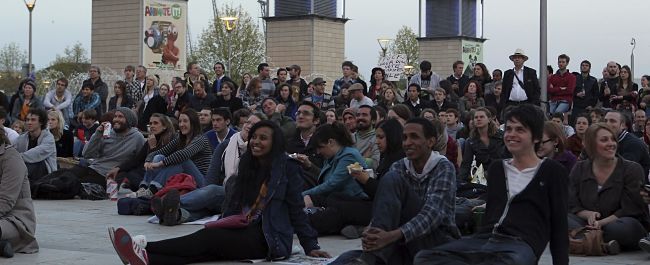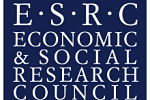Mayoral governance in Bristol: An initial assessment of impacts

The mayoral model of governance was introduced in Bristol in 2012. Significant changes have since resulted in the way the city is governed. Here we provide an initial assessment.
About the research
Strengthening city leadership by introducing directly elected mayors is now firmly on the agenda in the UK. Several cities, including Bristol, Leicester, Liverpool, and London already have directly elected mayors. Manchester plans to introduce a ‘metro mayor’ in 2017, with the prospect of other cities to follow. Supporters claim that the mayoral model of governance can provide more visible, more accountable, and ultimately more effective city leadership. Critics argue that the model can lead to an over centralisation of power, weakening the role of councillors, and undermining confidence in local democracy.
Bristol introduced a directly elected mayor in November 2012, and elected an independent candidate, George Ferguson, to lead the city. The Bristol Civic Leadership Project was established to assess what difference the mayoral model would make to the governance of the city, and to identify ways to improve the performance of the model. An active collaborative between the Universities of Bristol and the West of England, the research involves surveys of citizens and civic leaders, and workshops and focus groups with actors from inside and outside local government, both in Bristol and nationally. The research design makes us uniquely placed to compare attitudes before and after the introduction of the mayoral system.
The research demonstrates that there are wide differences of view on how well the introduction of mayoral governance is working, both in relation to whose views are sought, and which aspects of governance are being assessed. It is entirely beyond doubt that the mayoral model of governance increases the visibility of city leadership. There are more disputed effects on the broader processes of representation and decision-making, with councillors especially critical, and variations across different city neighbourhoods.
Image: Simon Spokes, University of the West of England
Recommendations
We suggest the following are areas that deserve attention in order to progress the mayoral model, both locally and nationally:
- Given that mayoral governance can strengthen city leadership, central government should offer more incentives to localities, whether individual local authorities or metropolitan areas, to adopt the mayoral model.
- Bristol should take steps to improve the system of representation within mayoral governance to increase the influence of councillors and neighbourhoods, with particular emphasis on closing gaps in perceptions of influence between more and less prosperous parts of the city.
- Bristol and other mayoral cities can reduce the centralisation inherent in the model by devolving more decision-making power to councillors and involving neighbourhoods within the city more fully in decision-making processes.
Leading the city
Visibility of city leadership
The introduction of the mayoral model has resulted in a dramatic increase in the visibility of city leadership. In 2012 24% of citizens thought the city had visible leadership, whereas in 2014 this figure leapt to 69%. Civic leaders from the community, voluntary and business sectors are even more positive. Some 25% thought that the city had visible leadership in 2012, a figure that soared to 97% in 2014. Even councillors, many of whom remain opposed to the mayoral model, recognise that the model has increased the visibility of the city leader (56% to 78%).
A vision for the city
Mayoral leadership has also led to a more broadly recognised vision for the city. In 2012, 25% of citizens agreed with the statement ‘The leadership of the council has a vision for the city’, compared with 56% in 2014. Civic leaders from the community, voluntary and business sectors are even more positive about this shift, with such agreement jumping from 33% to 75% between surveys.
Improved leadership of the city
After the introduction of mayoral governance, 54% of citizens agreed that a directly elected mayor had improved the leadership of the city. 76% of civic leaders in the community, voluntary and business sectors felt that leadership had improved. In contrast, only 31% of councillors thought that leadership had improved with a directly elected mayor.
“Having an elected mayor moves things faster, not always in the right direction, but any decision is better than nothing.”
- Business sector representative
Representing the city
Representation of the city
Bristol now enjoys more access to influential figures in central government than hitherto. The Mayor has been afforded multiple meetings with the Prime Minister, with Greg Clark, MP, Minister of State for Universities, Science, and Cities, and with other ministers.
In addition, the mayor has undertaken many international visits and, in 2014, was named by the BBC as the country’s most well-travelled mayor. One of the most significant visits was to the ‘Remaking Cities Congress’ in Pittsburgh in October 2013, where the mayor was the only civic leader outside North America to be invited to speak. These international visits have contributed to Bristol being; one of only four European cities to be invited to join the network of 100 Resilient Cities, run by the Rockefeller Foundation in the USA; designated European Green Capital 2015; recognised for Urban Innovation in an Award from the Chinese City of Guangzhou.
Respondents to our 2014 survey were asked if they agreed that the introduction of the mayoral system had ensured the interests of Bristol are better represented. 54% of citizens agreed, while 78% of public managers, and 79% of leaders from the business, community and voluntary sectors agreed. Only 33% of councillors agreed.
Representation in the city
Councillors clearly feel that the mayoral system of governance is much more closed than the previous one, with only 19% agreeing after the introduction of mayoral governance that ‘There are many opportunities to get involved in decision-making in important affairs in the city’, compared to 61% beforehand. In contrast, the proportion of civic leaders from the community, voluntary and business sectors who believe that there are many opportunities for involvement has risen from 36% in 2012 to 53% in 2014.
Citizen views are diverse. In 2012, only 27% thought that the previous system provided many opportunities to get involved in decision-making. The 2014 figure is 33%. Analysis of area-based views suggests that the more deprivation increases, the less likely it is that people believe there are many opportunities for involvement. In 2014, in the most deprived wards in Bristol, 29% of people thought there were many opportunities for involvement; in the least deprived wards, this figure was 40%. Similarly, 17% of those living in the most deprived wards were likely to think their community’s needs were well represented in decision-making in the council, compared to 31% in the least deprived wards.
Decision making in the city
Clarity around who is responsible for making decisions
Public managers employed by the council and other public agencies believe that the mayoral model makes it clearer who is responsible for making decisions. In 2012 some 42% thought the pre-mayoral model delivered clarity while the equivalent figure for 2014 was, at 64%, a considerable step up. Many citizens of Bristol also think that the mayoral model has increased clarity on decision-making responsibilities; in 2012 the figure was only 17% whereas in 2014 it had more than doubled to 38%. Councillors’ views between 2012 and 2014 were little changed, at around 40%, as were those of the business, community and voluntary sector (30% to 35%).
Timeliness of decisions
Councillors think there has been a collapse in the timeliness of decision-making. When asked to agree with the statement ‘Decisions are made in a timely way by the council’, 44% agreed before the introduction of the mayor, but only 6% after. Citizens notice little change in timeliness 13% in 2012 and 15% in 2014. Public managers perceive an improvement; some 16% thought the pre-mayoral model delivered timely decision-making compared to 36% in 2014.
Trust and confidence
Again there are differences of view on whether or not trust has been improved by the governance changes in Bristol. Consistent with the views expressed above, councillors are much less likely to agree with the statement ‘I trust the council to make good decisions’; they perceive a decline in trust from 44% in 2012 to 16% in 2014. Only 3% of councillors think that the introduction of the mayoral system has improved public confidence in decision-making in the city. Citizens do notice a marginal improvement in trust, but it remains low – up to 23% from 19%. And 33% say a mayor has improved public confidence in decision-making, but there are differences across the city. In the least deprived wards, 39% agree that a mayoral system has improved public confidence in decision-making; however, this figure is only 25% in the most deprived wards.

Image © Matt Cardy
Learning the lessons
The evidence above shows the introduction of the mayoral model in Bristol has undoubtedly changed the governance of the city. While many feel that the clarity of decision-making has improved, evidence around timeliness of, trust in, and confidence in decision-making do not offer much encouragement for those who advocate the virtues of mayoral governance. There are also differences in citizen opinions according to the level of deprivation in the areas where those citizens live.
The challenge for policy makers, locally and nationally, is to make the mayoral system function more effectively in years to come. In the period ahead it is desirable to build on the perceived strengths of the mayoral model of governance while taking action to address perceived flaws. Much depends on legislative frameworks within which cities and mayors can act. However, there is considerable scope to modify the day-to-day practice of mayoral governance within the city. The initial findings of this ‘before and after’ study highlight many major plus points for the mayoral model. But the study also identifies areas of concern.
Further information
To find out more about this research, please visit the project website: bristolcivicleadership.net/
You can read the first PolicyBriefing here.
Authors
Dr David Sweeting, University of Bristol
Professor Robin Hambleton, University of the West of England, Bristol
Policy Report 03: 2015
Mayoral governance in Bristol: An initial assessment of impacts (PDF, 929kB)
There’s a worry in my mind that we just end up going round in circles. One of the hopes I had about the mayor was that it would unblock the logjam. Now the worry is that it is too unaccountable...which means we end up going round in circles and creating logjams again. I’m worried that we’re striving for a utopia that doesn’t exist.
Contact the researchers
Dr David Sweeting
University of Bristol
david.sweeting@bristol.ac.uk
Professor Robin Hambleton
University of the West of England, Bristol
robin.hambleton@uwe.ac.uk

